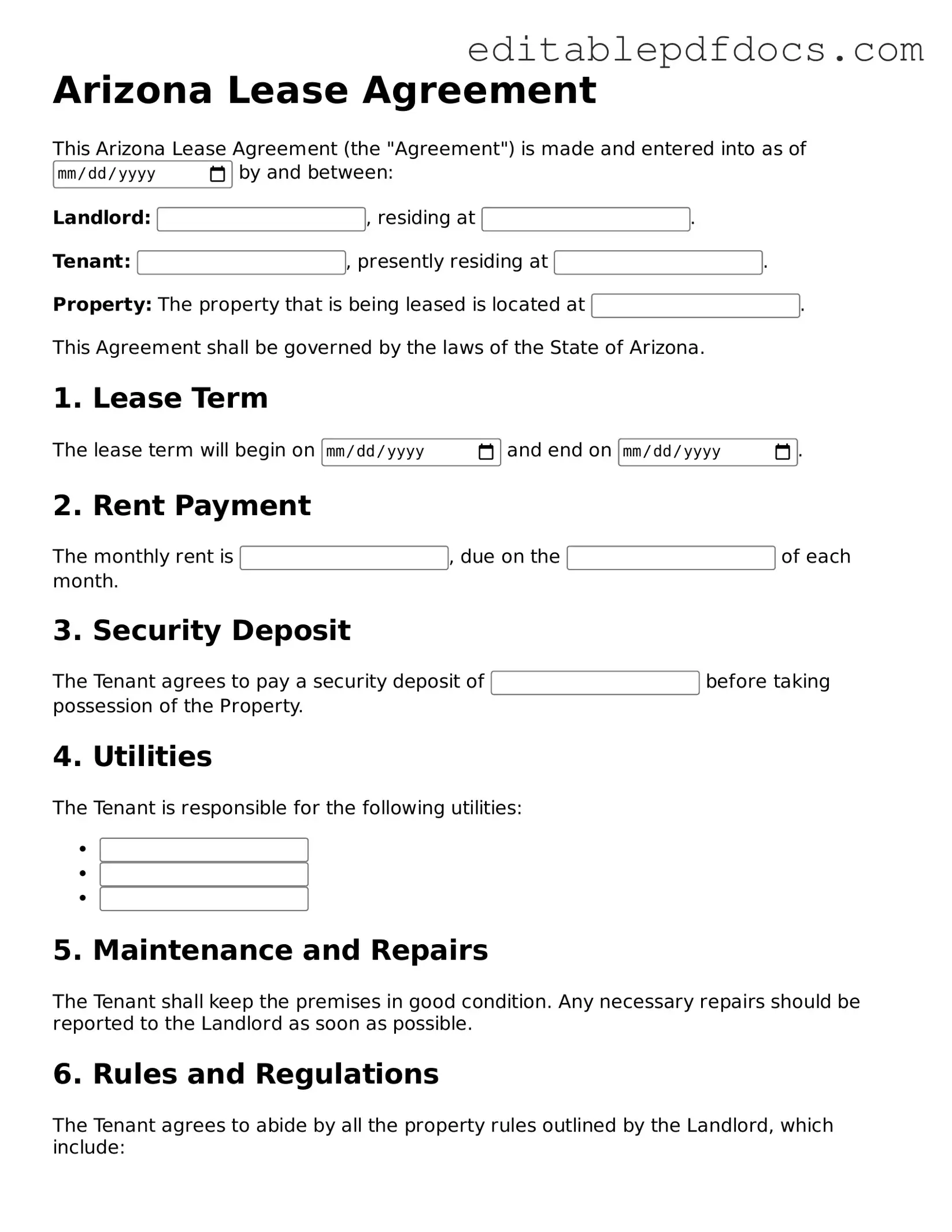Completing the Arizona Lease Agreement form can be straightforward, but several common mistakes can complicate the process. One frequent error is failing to include all necessary tenant and landlord information. Ensure that full names, addresses, and contact details are clearly stated. Missing information can lead to misunderstandings or disputes later.
Another mistake involves overlooking the lease term. Clearly specify the start and end dates of the lease. If these dates are ambiguous, it may create confusion regarding the duration of the tenancy. Always double-check that the terms align with both parties' expectations.
Many individuals neglect to read the entire lease agreement before signing. This oversight can result in agreeing to terms that are not fully understood. Take the time to review each section carefully, and ask questions if anything is unclear. Communication is key to a successful rental relationship.
Also, a common error is failing to specify the rental amount and payment terms. Clearly outline the monthly rent, due date, and acceptable payment methods. Inadequate details can lead to payment disputes or late fees, which can strain the landlord-tenant relationship.
Another area where mistakes often occur is in the security deposit section. Ensure that the amount of the security deposit is clearly stated, along with conditions for its return. Not addressing these details can lead to misunderstandings when the lease ends.
Ignoring maintenance responsibilities is also a mistake. Clearly define who is responsible for repairs and maintenance. This clarity helps prevent conflicts and ensures that both parties understand their obligations throughout the lease term.
Additionally, people often forget to include any special provisions or rules. If there are specific guidelines about pets, smoking, or property use, these should be documented in the lease. Omitting this information can lead to conflicts later on.
Lastly, failing to keep a copy of the signed lease agreement is a critical mistake. Both parties should retain a copy for their records. This document serves as a reference point for the terms agreed upon and can be invaluable in case of disputes.
